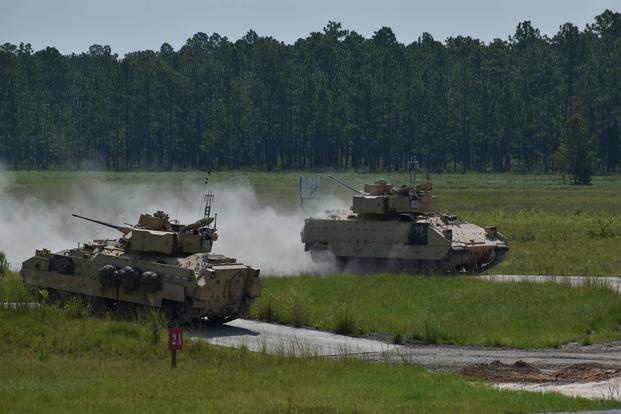Recent record budgets for the Defense Department won't be enough to cover the Army's long-term needs for modernization to meet growing threats from China and Russia, Acting Army Secretary Ryan McCarthy said Tuesday.
The $716 billion for fiscal 2019 was "wonderful," and the proposed $740 billion for fiscal 2020 is "great," he said.
"We're pretty blessed" for current funding, McCarthy added, but "we're going to need more money" from future budget negotiations for the Army's ambitious plans.
"We will have to find more money for the modernization effort," whether from the budget process or the elimination of more legacy programs, he said at the Foundation for Defense of Democracies think tank.
Related content:
- Army to Cut JLTV Buy to Pay for Future Systems
- Army Slashes Old Programs to Fund New Tech in 2020 Budget Request
- Army Plans to Cut $31.5 Billion in Coming Budget
"Funding challenges could be flat across this [Future Years Defense Program]," in the years 2022-2026, McCarthy said, referring to the period five years out from the current budget year.
"If we hold flat in the out years, our buying power starts to reduce," he said.
One way the Army is meeting the funding challenge is by cutting back, or eliminating, so-called "legacy" systems that no longer serve the nation's needs in an era of great power competition, McCarthy said. "We're divesting weapons systems, legacy systems of the past."
The Army has already made what McCarthy called "truncated buys" on a total of 93 programs, and he cited the Bradley Fighting Vehicle as an example.
Funding is present for "five brigade sets’ worth of Bradleys," he said, "and then we're walking away from the Bradley."
In addition, "we're going to have to continue to cut programs that are not our highest priority. We're going to keep doing that for years to come," McCarthy said, without naming which programs might be on the chopping block in the future.
However, as undersecretary of the service, McCarthy told the Association of the U.S. Army in February that the service was looking for about $22 billion in savings from program terminations and reductions in the 2020 budget.
On Tuesday, he again cited the Army's top six priorities: long-range precision fires, the next generation combat vehicle, future vertical lift, air and missile defense, a mobile network and soldier lethality.
McCarthy, a former captain with the 75th Ranger Regiment in Afghanistan, served as undersecretary of the Army and was named acting secretary last month when then-Army Secretary Mark Esper was confirmed as defense secretary.
President Donald Trump in June nominated McCarthy to assume the full-time position as Army secretary. McCarthy said he expects the Senate confirmation process to begin sometime after Congress returns from its August recess, "so I'm anxiously waiting to go through that again."
Retired Army Maj. Gen. Robert Scales attended McCarthy's presentation Tuesday and told Military.com later that he was impressed with McCarthy's emphasis on getting new systems rapidly to the field and ground units.
Scales, a member of the advisory board on the Defense Department's Close Combat Lethality Task Force, said McCarthy's approach appears to be "more tactical than strategic. For me, that's huge."
-- Richard Sisk can be reached at Richard.Sisk@Military.com.













